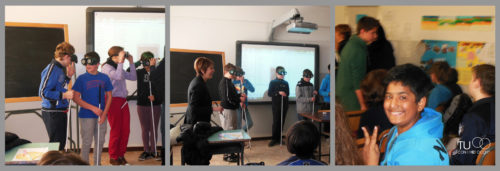
|
Ascolta l'articolo
|
The simulation activities that I bring to schools, libraries or social gatherings, as well as increasing awareness of the skills necessary for the management of disability, allow us to give an idea of the potentials of people with disabilities whom, very often, aren’t considered at all. But above all it allows to change negative and stereotypical attitudes towards people with disabilities. To improve communication and interpersonal relationships among young people, it is important to encourage the process of understanding by actively doing what disabled people do to adapt and cope, by tackling the problems that disability entails.
“Understanding how a person with serious visual problems (visually impaired), can move and what difficulties one has to face, becomes easy thanks to the help of the white cane and of simulators that reproduce the different pathologies. It allows children to enter my world without misunderstandings, without filters. The perception of the known environment changes inevitably. Even the most familiar place for us can hide obstacles and unpleasant difficulties when our field of vision is compromised. Our senses adapt more or less quickly to allow us to survive the change and get by, always and in every situation, as we become familiar with our changed condition. This happens to anyone.
Being projected in this new dimension provokes a series of predictable, inevitable, yet surprising reactions. The discomfort, the annoyance, the disorientation of the first moments are gradually replaced by the attention to the present, to what we “feel” around us without being able to see it, and by sudden changes of our logical process (for example, rapid research of solutions for overcoming that obstacle that impedes movement) by a deep focus on auditive, tactile, olfactory solicitations that would usually get lost into the background. The transformation becomes evident: we are the same as before, but we are different. We have been forced to reduce our field of action, we have narrowed our objective visual boundaries, and we have become aware of our limitations, it is true. We have also, however, discovered new resources within ourselves to adapt and overcome even what might seem insurmountable. We are ready to welcome another vision of ourselves, ready to offer ourselves to the world as we are. Without fear and without shame. The inalienable right to existence expressed in the condition of dignity proper to every human being. “








